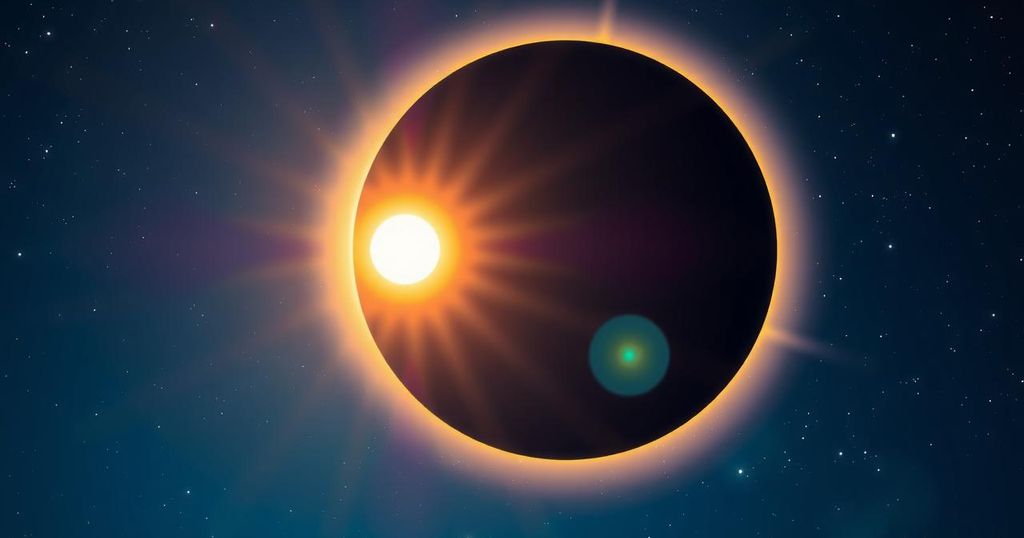Today, a partial solar eclipse will be visible across parts of the northern hemisphere, lasting about four hours. It begins at 8:50 AM UTC and ends at 12:43 PM. Observers should use eye protection due to potential risks from sunlight. The event follows a total lunar eclipse and hints at future eclipses.
Today, a partial solar eclipse will occur, allowing observers in parts of the northern hemisphere—from eastern Canada to Siberia—to witness this celestial event. This marks the 17th solar eclipse of the 21st century and the first of the year, expected to last approximately four hours, commencing at 8:50 AM UTC and concluding at 12:43 PM UTC.
According to astronomer Florent Deleflie from the Paris-PSL Observatory, Mauritania and Morocco will be among the first to observe the eclipse, while residents of northern Siberia will be the last. Europe will also experience the partial eclipse, peaking at 10:47 AM UTC over northeastern Canada and Greenland, where as much as 90% of the sun’s disk will be obscured, although it will not completely darken the sky.
A solar eclipse occurs when the sun, moon, and Earth align closely enough for the moon’s shadow to cast on the Earth. However, Deleflie notes that for this eclipse, the alignment is not perfect enough to create a total eclipse; hence, it will remain largely in space.
In France, the eclipse will be observable between 10:00 AM and 12:00 PM UTC, with 10% to 30% of the sun’s disk covered, depending on location. Given this minimal obstruction, observers should prioritize eye safety by using proper eye protection, as powerful sunlight poses risks of eye burns and permanent damage. Deleflie emphasizes that even minor defects in eclipse glasses can lead to harm.
This event follows a recent total lunar eclipse, resulting in a red appearance of the moon, which is typical as it reaches this phase in its cycle around the Earth. The last partial solar eclipse in mainland France occurred on October 25, 2022, with the subsequent total solar eclipse scheduled for August 12, 2026, which will obscure a significant portion of the sun’s disk in Paris and Marseille but will not traverse France’s path directly.
The partial solar eclipse today presents a unique opportunity for viewers across various geographical locations, including parts of the northern hemisphere and Europe. Proper eye protection is essential during this event to avoid potential eye damage. Understanding the nature and visibility of this eclipse furthers appreciation for astronomical phenomena, showcasing the beauty and complexity of celestial alignments and cycles.
Original Source: www.jordannews.jo






